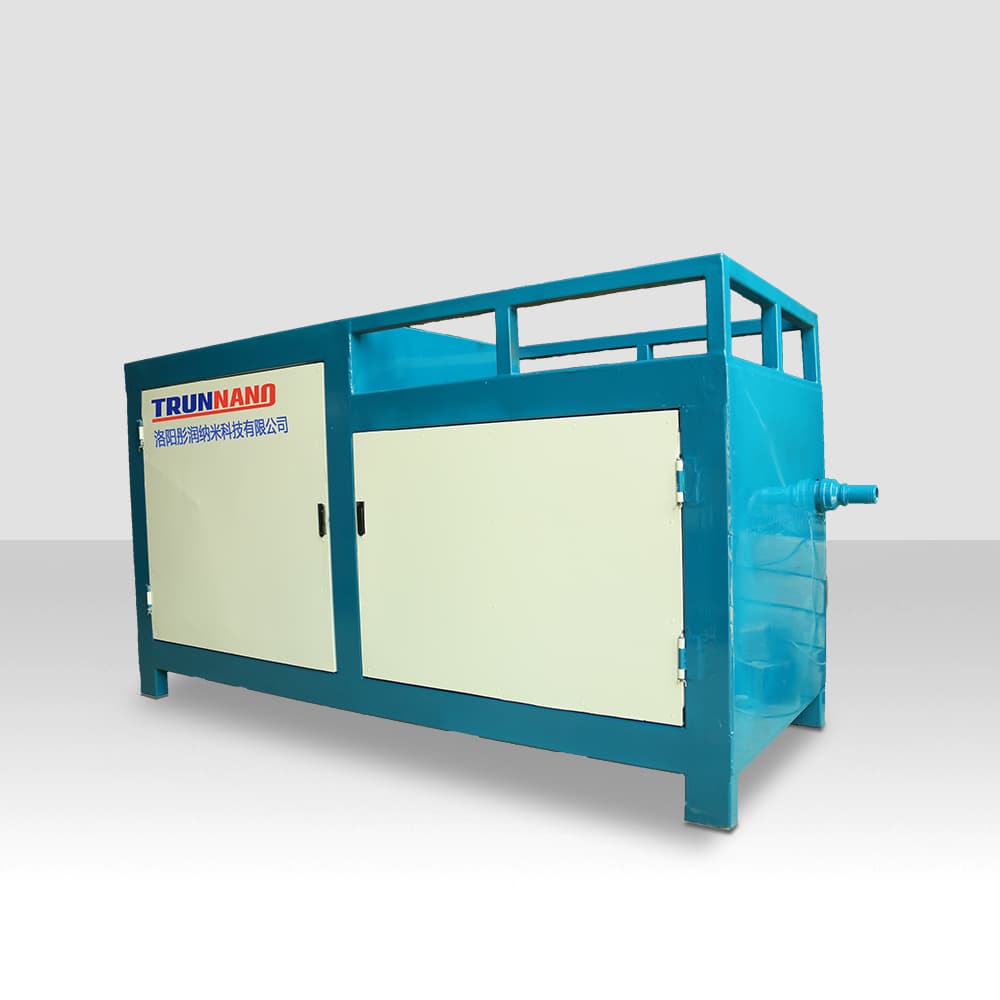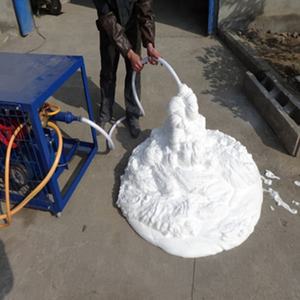1. Principles of Foam Generation and the Duty in Lightweight Concrete Systems
1.1 Principles of Air Entrainment and Mobile Structure Development
(Lightweight Concrete Foam Generators)
Lightweight concrete, a class of building products characterized by lowered density and enhanced thermal insulation, counts fundamentally on the regulated intro of air or gas gaps within a cementitious matrix– a procedure known as foaming.
The creation of these consistently dispersed, steady air cells is achieved through making use of a specialized tool referred to as a foam generator, which produces fine, microscale bubbles that are subsequently mixed right into the concrete slurry.
These bubbles, usually varying from 50 to 500 micrometers in size, come to be permanently entrained upon cement hydration, resulting in a mobile concrete framework with dramatically lower system weight– often between 300 kg/m three and 1,800 kg/m THREE– contrasted to conventional concrete (~ 2,400 kg/m TWO).
The foam generator is not just a supporting device but a crucial engineering element that establishes the top quality, consistency, and performance of the last light-weight concrete item.
The process starts with a fluid foaming agent, normally a protein-based or synthetic surfactant solution, which is presented into the generator where it is mechanically or pneumatically distributed right into a dense foam via high shear or pressed air injection.
The security and bubble dimension distribution of the produced foam directly affect crucial material residential properties such as compressive strength, thermal conductivity, and workability.
1.2 Classification and Operational Devices of Foam Generators
Foam generators are generally categorized into three main kinds based upon their functional concepts: low-pressure (or wet-film), high-pressure (or dynamic), and rotary (or centrifugal) systems.
Low-pressure generators utilize a permeable tool– such as a great mesh, textile, or ceramic plate– through which compressed air is forced, producing bubbles as the lathering remedy moves over the surface.
This approach generates fairly big, much less consistent bubbles and is generally used for lower-grade applications where exact control is much less essential.
High-pressure systems, in contrast, utilize a nozzle-based layout where a high-velocity stream of compressed air shears the lathering liquid into a penalty, homogeneous foam with narrow bubble size distribution.
These systems provide exceptional control over foam density and security, making them perfect for structural-grade light-weight concrete and precast applications.
( Lightweight Concrete Foam Generators)
Rotary foam generators utilize a spinning disk or drum that flings the lathering option into a stream of air, developing bubbles via mechanical dispersion.
While much less exact than high-pressure systems, rotating generators are valued for their robustness, convenience of maintenance, and continual result, suitable for large on-site pouring operations.
The selection of foam generator type relies on project-specific demands, including preferred concrete density, production quantity, and efficiency specifications.
2. Material Scientific Research Behind Foam Security and Concrete Efficiency
2.1 Foaming Agents and Interfacial Chemistry
The efficiency of a foam generator is intrinsically linked to the chemical composition and physical habits of the foaming agent.
Frothing representatives are surfactants that minimize the surface stress of water, making it possible for the development of steady air-liquid user interfaces.
Protein-based representatives, stemmed from hydrolyzed keratin or albumin, generate durable, elastic foam movies with superb stability and are often favored in architectural applications.
Synthetic representatives, such as alkyl sulfonates or ethoxylated alcohols, provide faster foam generation and lower expense however may produce less steady bubbles under long term mixing or adverse environmental conditions.
The molecular framework of the surfactant establishes the thickness and mechanical strength of the lamellae (thin fluid movies) bordering each bubble, which must stand up to coalescence and water drainage during mixing and treating.
Additives such as viscosity modifiers, stabilizers, and pH buffers are often incorporated right into frothing options to improve foam persistence and compatibility with concrete chemistry.
2.2 Influence of Foam Characteristics on Concrete Properties
The physical attributes of the produced foam– bubble dimension, dimension circulation, air content, and foam density– straight determine the macroscopic behavior of lightweight concrete.
Smaller sized, evenly dispersed bubbles improve mechanical strength by lessening anxiety concentration factors and developing an extra uniform microstructure.
On the other hand, bigger or irregular bubbles can serve as problems, minimizing compressive strength and raising leaks in the structure.
Foam stability is similarly essential; premature collapse or coalescence during blending result in non-uniform density, segregation, and lowered insulation efficiency.
The air-void system also impacts thermal conductivity, with finer, closed-cell structures offering exceptional insulation due to entraped air’s low thermal diffusivity.
Furthermore, the water material of the foam influences the water-cement ratio of the last mix, demanding precise calibration to avoid compromising the cement matrix or delaying hydration.
Advanced foam generators now integrate real-time monitoring and responses systems to keep regular foam output, making sure reproducibility throughout sets.
3. Assimilation in Modern Building And Construction and Industrial Applications
3.1 Structural and Non-Structural Uses Foamed Concrete
Lightweight concrete created by means of foam generators is used throughout a wide spectrum of construction applications, ranging from insulation panels and void filling to bearing walls and pavement systems.
In structure envelopes, lathered concrete gives outstanding thermal and acoustic insulation, adding to energy-efficient styles and decreased cooling and heating loads.
Its reduced density additionally reduces structural dead load, permitting smaller sized foundations and longer periods in high-rise and bridge building.
In civil design, it is used for trench backfilling, tunneling, and incline stabilization, where its self-leveling and low-stress features avoid ground disruption and improve safety.
Precast manufacturers utilize high-precision foam generators to produce lightweight blocks, panels, and building elements with limited dimensional tolerances and consistent quality.
In addition, foamed concrete shows intrinsic fire resistance due to its low thermal conductivity and absence of organic parts, making it suitable for fire-rated settings up and passive fire protection systems.
3.2 Automation, Scalability, and On-Site Production Systems
Modern building demands quick, scalable, and reputable manufacturing of lightweight concrete, driving the assimilation of foam generators right into computerized batching and pumping systems.
Fully automated plants can synchronize foam generation with cement blending, water dosing, and additive injection, making it possible for constant production with marginal human treatment.
Mobile foam generator units are progressively deployed on construction websites, permitting on-demand fabrication of foamed concrete straight at the point of usage, reducing transport expenses and material waste.
These systems are frequently furnished with electronic controls, remote tracking, and information logging capacities to make sure conformity with design requirements and high quality criteria.
The scalability of foam generation technology– from tiny portable devices to industrial-scale systems– sustains its fostering in both created and emerging markets, advertising lasting structure methods internationally.
4. Technical Improvements and Future Directions in Foam Generation
4.1 Smart Foam Generators and Real-Time Refine Control
Arising advancements in foam generator style concentrate on boosting accuracy, efficiency, and adaptability with digitalization and sensing unit integration.
Smart foam generators geared up with pressure sensing units, circulation meters, and optical bubble analyzers can dynamically change air-to-liquid ratios and monitor foam high quality in genuine time.
Machine learning algorithms are being explored to predict foam actions based upon environmental problems, raw material variants, and historical performance information.
Such developments intend to lessen batch-to-batch irregularity and optimize product performance, particularly in high-stakes applications like nuclear protecting or overseas construction.
4.2 Sustainability, Environmental Influence, and Eco-friendly Material Integration
As the building and construction industry moves toward decarbonization, foam generators contribute in lowering the environmental footprint of concrete.
By reducing product density, much less concrete is required each volume, straight minimizing carbon monoxide two discharges associated with cement production.
Additionally, lathered concrete can include auxiliary cementitious materials (SCMs) such as fly ash, slag, or silica fume, enhancing sustainability without endangering efficiency.
Study is additionally underway to develop bio-based foaming agents derived from renewable sources, lessening dependence on petrochemical surfactants.
Future advancements might include energy-efficient foam generation techniques, assimilation with carbon capture technologies, and recyclable concrete formulas allowed by secure cellular structures.
In conclusion, the lightweight concrete foam generator is far more than a mechanical tool– it is a crucial enabler of sophisticated material design in modern construction.
By specifically controlling the architecture of air voids at the microscale, it transforms traditional concrete into a multifunctional, sustainable, and high-performance product.
As technology develops, foam generators will continue to drive innovation in building scientific research, facilities durability, and environmental stewardship.
5. Supplier
Cabr-Concrete is a supplier of Concrete Admixture with over 12 years of experience in nano-building energy conservation and nanotechnology development. It accepts payment via Credit Card, T/T, West Union and Paypal. TRUNNANO will ship the goods to customers overseas through FedEx, DHL, by air, or by sea. If you are looking for high quality Concrete Admixture, please feel free to contact us and send an inquiry.
Tags: Lightweight Concrete Foam Generators, foammaster, foam generator
All articles and pictures are from the Internet. If there are any copyright issues, please contact us in time to delete.
Inquiry us






